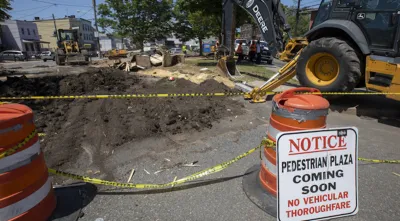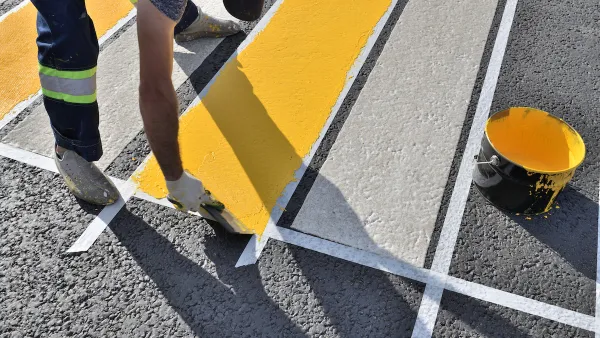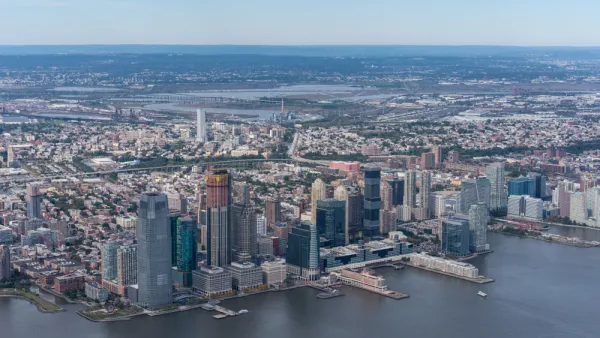The city’s new Department of Infrastructure consolidates the management of public amenities and has guided the creation of new bike lanes, pedestrian plazas, and parks.

The decision to consolidate the management of streets, transit, parks, municipal buildings, and other public facilities into one Department of Infrastructure in Jersey City, New Jersey has made a significant impact on the city’s public realm, writes Robert Steuteville in Public Square.
The consolidation has helped the city understand its transportation and mobility needs and resources from a broader perspective. “The department and policies leading up to its creation were pivotal in implementing nearly 25 miles of protected bike lanes, carving pedestrian plazas from excess asphalt, planting more than 1,000 trees, building new parks, renovating public spaces, and creating parklets for outdoor dining.”
The rapid changes are also due to the city’s embrace of tactical urbanism strategies — quick-build, low-cost interventions usually implemented by local activists that skirt traditional bureaucratic processes. In the case of Jersey City, the city itself adopted the concept to deploy nimble, low-cost projects that have led to permanent changes. “Leftover tennis court paint and planters were used to build a pedestrian plaza through the heart of the downtown dating from the 17th Century. Road diets were implemented along major streets to establish the protected bike lane network using paint and vertical separation. The nimble fleet of micro-transit vans was employed to fill gaps in transit access.” In 2022, the city eliminated traffic deaths for a full year on city-managed roads thanks in large part to quick-build road safety interventions.
For Steuteville, Jersey City is a prime example of what can happen when a city takes a holistic view of infrastructure and rejects bureaucracy in favor of immediate — and sometimes life-saving — improvements to the public realm.
FULL STORY: Infrastructure Department boosts the public realm

National Parks Layoffs Will Cause Communities to Lose Billions
Thousands of essential park workers were laid off this week, just before the busy spring break season.

Retro-silient?: America’s First “Eco-burb,” The Woodlands Turns 50
A master-planned community north of Houston offers lessons on green infrastructure and resilient design, but falls short of its founder’s lofty affordability and walkability goals.

Delivering for America Plan Will Downgrade Mail Service in at Least 49.5 Percent of Zip Codes
Republican and Democrat lawmakers criticize the plan for its disproportionate negative impact on rural communities.

Test News Post 1
This is a summary

Test News Headline 46
Test for the image on the front page.

Balancing Bombs and Butterflies: How the National Guard Protects a Rare Species
The National Guard at Fort Indiantown Gap uses GIS technology and land management strategies to balance military training with conservation efforts, ensuring the survival of the rare eastern regal fritillary butterfly.
Urban Design for Planners 1: Software Tools
This six-course series explores essential urban design concepts using open source software and equips planners with the tools they need to participate fully in the urban design process.
Planning for Universal Design
Learn the tools for implementing Universal Design in planning regulations.
EMC Planning Group, Inc.
Planetizen
Planetizen
Mpact (formerly Rail~Volution)
Great Falls Development Authority, Inc.
HUDs Office of Policy Development and Research
NYU Wagner Graduate School of Public Service





























